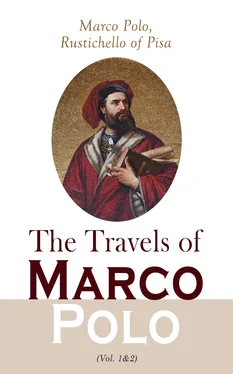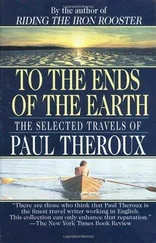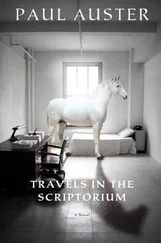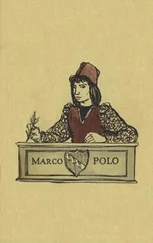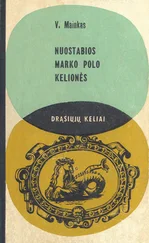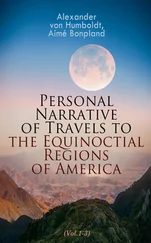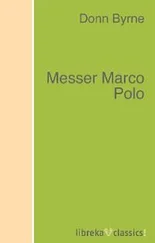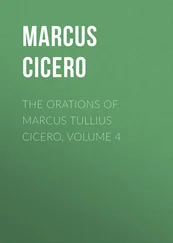The London prices of Chermisi and Baldacchini in the early part of the 15th century will be found in Uzzano's work, but they are hard to elucidate.
Babylon, of which Baghdad was the representative, was famous for its variegated textures in very early days. We do not know the nature of the goodly Babylonish garment which tempted Achan in Jericho, but Josephus speaks of the affluence of rich stuffs carried in the triumph of Titus, "gorgeous with life-like designs from the Babylonian loom," and he also describes the memorable Veil of the Temple as a [Greek: péplos Babylónios] of varied colours marvellously wrought. Pliny says King Attalus invented the intertexture of cloth with gold; but the weaving of damasks of a variety of colours was perfected at Babylon, and thence they were called Babylonian.
The brocades wrought with figures of animals in gold, of which Marco speaks, are still a spécialité at Benares, where they are known by the name of Shikárgáh or hunting-grounds, which is nearly a translation of the name Thard-wahsh "beast-hunts," by which they were known to the mediaeval Saracens. (See Q. Makrizi , IV. 69–70.) Plautus speaks of such patterns in carpets, the produce of Alexandria—" Alexandrina belluata conchyliata tapetia ." Athenaeus speaks of Persian carpets of like description at an extravagant entertainment given by Antiochus Epiphanes; and the same author cites a banquet given in Persia by Alexander, at which there figured costly curtains embroidered with animals. In the 4th century Asterius, Bishop of Amasia in Pontus, rebukes the Christians who indulge in such attire: "You find upon them lions, panthers, bears, huntsmen, woods, and rocks; whilst the more devout display Christ and His disciples, with the stories of His miracles," etc. And Sidonius alludes to upholstery of like character:
"Peregrina det supellex
* * *
Ubi torvus, et per artem
Resupina flexus ora,
It equo reditque telo
Simulacra bestiarum
Fugiens fugansque Parthus." ( Epist. ix. 13.)
A modern Kashmír example of such work is shown under ch. xvii.
( D'Avezac , p. 524; Pegolotti , in Cathay , 295, 306; I. B. II. 309, 388, 422; III. 81; Della Decima , IV. 125–126; Fr.-Michel, Recherches , etc., II. 10–16, 204–206; Joseph. Bell. Jud. VII. 5, 5, and V. 5, 4; Pliny , VIII. 74 (or 48); Plautus, Pseudolus , I. 2; Yonge's Athenaeus , V. 26 and XII. 54; Mongez in Mém. Acad. IV. 275–276.)
NOTE 5.—[Bretschneider ( Med. Res. I. p. 114) says: "Hulagu left Karakorum, the residence of his brother, on the 2nd May, 1253, and returned to his ordo, in order to organize his army. On the 19th October of the same year, all being ready, he started for the west." He arrived at Samarkand in September, 1255. For this chapter and the following of Polo, see: Hulagu's Expedition to Western Asia, after the Mohammedan Authors , pp. 112–122, and the Translation of the Si Shi Ki (Ch'ang Te), pp. 122–156, in Bretschneider's Mediaeval Researches , I.—H. C.]
NOTE 6.—["Hulagu proceeded to the lake of Ormia (Urmia), when he ordered a castle to be built on the island of Tala , in the middle of the lake, for the purpose of depositing here the immense treasures captured at Baghdad. A great part of the booty, however, had been sent to Mangu Khan." ( Hulagu's Exp. , Bretschneider, Med. Res. I. p. 120.) Ch'ang Te says ( Si Shi Ki , p. 139): "The palace of the Ha-li-fa was built of fragrant and precious woods. The walls of it were constructed of black and white jade. It is impossible to imagine the quantity of gold and precious stones found there."—H. C.]
"I said to the Kalif: 'Thou art old,
Thou hast no need of so much gold.
Thou shouldst not have heaped and hidden it here,
Till the breath of Battle was hot and near,
But have sown through the land these useless hoards
To spring into shining blades of swords,
And keep thine honour sweet and clear.
* * * * *
Then into his dungeon I locked the drone,
And left him to feed there all alone
In the honey-cells of his golden hive:
Never a prayer, nor a cry, nor a groan
Was heard from those massive walls of stone,
Nor again was the Kalif seen alive.'
This is the story, strange and true,
That the great Captain Alau
Told to his brother, the Tartar Khan,
When he rode that day into Cambalu.
By the road that leadeth to Ispahan." ( Longfellow .)[1]
The story of the death of Mosta'sim Billah, the last of the Abbaside
Khalifs, is told in much the same way by Hayton, Ricold, Pachymeres, and
Joinville. The memory of the last glorious old man must have failed him,
when he says the facts were related by some merchants who came to King
Lewis, when before Saiette (or Sidon), viz. in 1253, for the capture of
Baghdad occurred five years later. Mar. Sanuto says melted gold was poured
down the Khalif's throat—a transfer, no doubt, from the old story of
Crassus and the Parthians. Contemporary Armenian historians assert that
Hulaku slew him with his own hand.
All that Rashiduddin says is: "The evening of Wednesday, the 14th of Safar, 656 (20th February, 1258), the Khalif was put to death in the village of Wakf, with his eldest son and five eunuchs who had never quitted him." Later writers say that he was wrapt in a carpet and trodden to death by horses.
[Cf. The Story of the Death of the last Abbaside Caliph, from the Vatican MS. of Ibn-al-Furat , by G. le Strange ( Jour. R. As. Soc. , April, 1900, pp. 293–300). This is the story of the death of the Khalif told by Ibn-al-Furat (born in Cairo, 1335 A.D.):
"Then Hulagu gave command, and the Caliph was left a-hungering, until his case was that of very great hunger, so that he called asking that somewhat might be given him to eat. And the accursed Hulagu sent for a dish with gold therein, and a dish with silver therein, and a dish with gems, and ordered these all to be set before the Caliph al Musta'sim, saying to him, 'Eat these.' But the Caliph made answer, 'These be not fit for eating.' Then said Hulagu: 'Since thou didst so well know that these be not fit for eating, why didst thou make a store thereof? With part thereof thou mightest have sent gifts to propitiate us, and with part thou shouldst have raised an army to serve thee and defend thyself against us! And Hulagu commanded them to take forth the Caliph and his son to a place without the camp, and they were here bound and put into two great sacks, being afterwards trampled under foot till they both died—the mercy of Allah be upon them."—H. C.]
The foundation of the story, so widely received among the Christians, is to be found also in the narrative of Nikbi (and Mirkhond), which is cited by D'Obsson. When the Khalif surrendered, Hulaku put before him a plateful of gold, and told him to eat it. "But one does not eat gold," said the prisoner. "Why, then," replied the Tartar, "did you hoard it, instead of expending it in keeping up an army? Why did you not meet me at the Oxus?" The Khalif could only say, "Such was God's will!" "And that which has befallen you was also God's will," said Hulaku.
Wassáf's narrative is interesting:—"Two days after his capture the Khalif was at his morning prayer, and began with the verse ( Koran , III. 25), 'Say God is the Possessor of Dominion! It shall be given to whom He will; it shall be taken from whom He will: whom He will He raiseth to honour; whom He will He casteth to the ground.' Having finished the regular office he continued still in prayer with tears and importunity. Bystanders reported to the Ilkhan the deep humiliation of the Khalif's prayers, and the text which seemed to have so striking an application to those two princes. Regarding what followed there are different stories. Some say that the Ilkhan ordered food to be withheld from the Khalif, and that when he asked for food the former bade a dish of gold be placed before him, etc. Eventually, after taking counsel with his chiefs, the Padishah ordered the execution of the Khalif. It was represented that the blood-drinking sword ought not to be stained with the gore of Mosta'sim. He was therefore rolled in a carpet, just as carpets are usually rolled up, insomuch that his limbs were crushed."
Читать дальше
